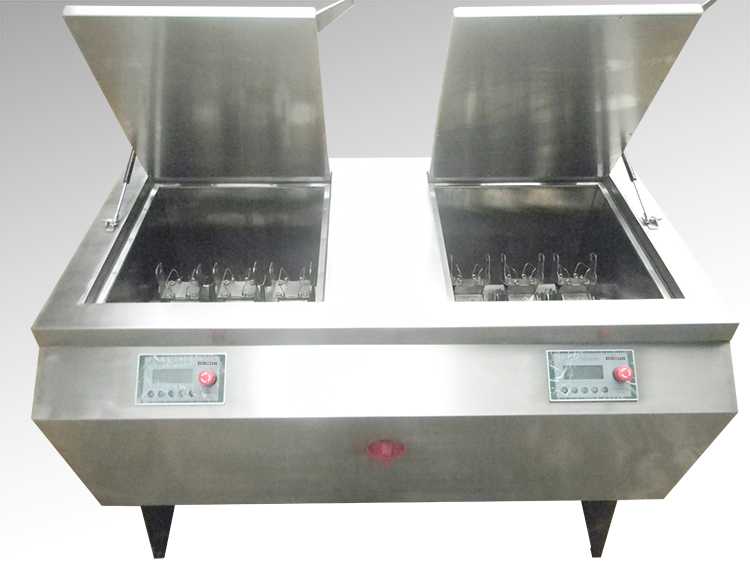
NewsInformation Center
Decrypt 3 factors that affect the rubbing color fastness of textiles
2021/08/18
Color fastness to rubbing is an item of textile color fastness inspection, and it is also one of the most common inspection items in the textile trade process. It refers to the degree of discoloration of dyed fabrics after friction, and is an assessment of the resistance of dyes to mechanical friction. Ability is divided into dry friction and wet friction. The principle is to fix a textile sample of a specified size on the platform of the friction tester with a clamping device, and then rub it with a dry friction cloth and a wet friction cloth respectively. *Based on the degree of staining of the white cloth as the evaluation basis, compared with the standard gray sample card, it is divided into 5 grades. The higher the grade, the better the rubbing fastness, and the fabric with poor rubbing fastness will seriously affect its use.
There are many factors that affect the color fastness to rubbing of fabrics, and several of them are analyzed below.
1. The influence of fabric surface morphology
Since unfixed dyes are the main cause of poor color fastness to rubbing, under dry conditions, it is very easy to dry rubbing for rough surface or sanded and raised fabrics, such as hemp fabrics, denim fabrics and pigment printing fabrics. The dyes, paints or other colored substances accumulated on the surface of the fabric are ground down, and even some colored fibers are broken and colored particles are formed, which further reduces the color fastness to dry rubbing. For sanded or raised fabrics, the fluff on the surface of the fabric and the surface of the friction cloth are at a certain included angle, which is not parallel, so that the friction resistance of the friction head during reciprocating motion increases, and this type of fabric is resistant to drying. The color fastness to rubbing decreases.
2. The influence of the chemical structure of reactive dyes
When the cellulose fiber fabric dyed with reactive dyes is subjected to the wet rubbing fastness test, there are two main factors that cause color transfer: one is that the water-soluble dye is transferred to the rubbing fabric during rubbing, causing the original color to fade and make The rubbing cloth is stained; the second is that the partially dyed fiber breaks when rubbing, forming tiny colored fiber particles and being transferred to the rubbing fabric, causing staining.
Therefore, the factors that may affect the color fastness of reactive dyes to wet rubbing are: the structure and characteristics of the reactive dyes themselves; the properties of the fabric; the effect of pretreatment, cloth surface damage and surface finish, etc.; the dyeing process and the effect of soaping after dyeing; the fabric The effect of fixing treatment after dyeing; the effect of finishing of dyed fabrics, etc.;
Studies have shown that although the covalent bond strength, bond stability and adhesion formed by reactive dyes with different chemical structures and cellulose fibers are different, there is no significant difference in the effect on the color fastness to wet rubbing of dyed fabrics. .
When the dyed fabric is wet rubbed, the covalent bond formed between the dye and the fiber will not break and cause floating color. The transferred dye is usually a dye that is supersaturated, does not form a covalent bond with the fiber, and only relies on van der Waals force to produce adsorption, the so-called floating color.
3. The influence of the degree of dyeing
Studies have also proved that the color fastness to wet rubbing of reactive dyed fabrics is closely related to the depth of dyeing, that is, when wet rubbing, the amount of color transfer and the depth of dyeing are almost in a good linear relationship. Among them, the excessive dyeing Saturation is the most important factor. When dyeing dark colors, the dye concentration used is higher, but it should not greatly exceed the saturation value. Because the excess dye cannot be combined with the fiber, it can only accumulate on the surface of the fabric to form a floating color, which will seriously affect The color fastness to wet rubbing of the fabric.
In addition, cotton fibers without special treatment will swell under wet conditions, increase friction, and decrease fiber strength, which creates good conditions for the breakage, shedding and color transfer of colored fibers. Therefore, proper pre-treatment of cellulose fiber before dyeing, such as mercerizing, singeing, cellulase finishing, scouring, bleaching, washing, and drying, can improve the surface finish and hair effect of the fabric and reduce friction resistance. , Reduce the floating color, thereby effectively improving the color fastness to wet rubbing of the fabric.
The above is the details of the relevant content that Standard International will answer for you in detail. I hope to help you. If you need to purchase products, you are welcome to come to inquire: +8613671843966
Previous: Operation process of non-woven fabric liquid loss measuring instrument
N e x t : Economic operation of Shanghai's textile industry in the first half of the year




